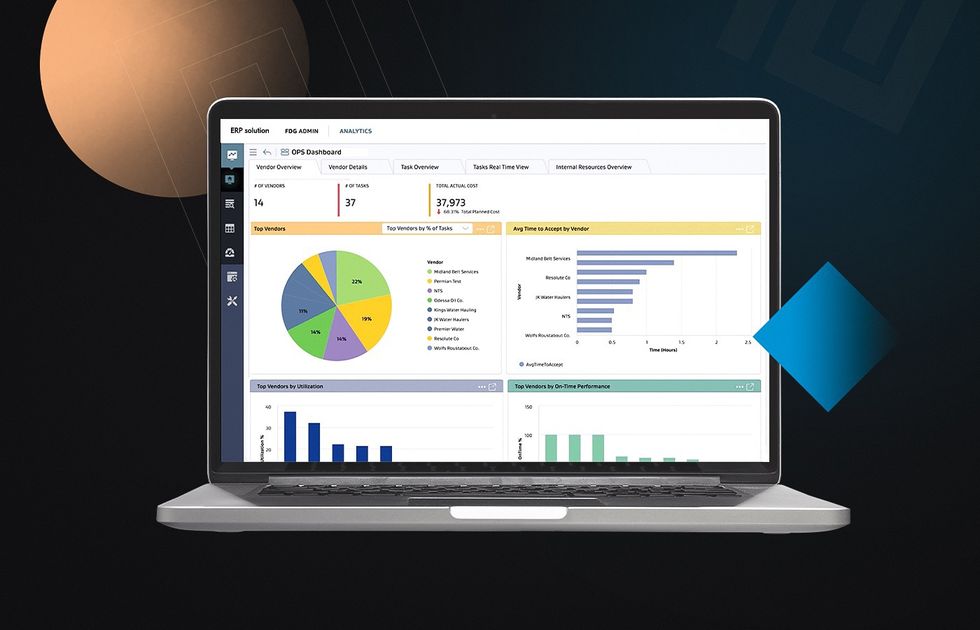
Key Takeaways
- Legacy app integration connects existing (and often outdated) software systems with modern solutions or technologies.
- Such integration reduces manual work, minimizes employee learning curves, enhances data accessibility, and improves decision-making.
- The most popular approaches include Point-to-Point (P2P), Enterprise Service Bus (ESB), Application Programming Interface (API), and Integration Platform as a Service (iPaaS).
Cloud computing, ML models, big data analytics, and automation have become integral to daily workflows. However, if you still rely on legacy infrastructure, these modern technologies may be inaccessible. Yes, you might be using modern applications. But you can’t unlock their full potential if they are siloed off from your core systems. Luckily, you can bring things together with legacy system integration. Today, we want to share the benefits of integration, challenges, and main approaches.
What Is Legacy System Integration?

Legacy system integration connects legacy software with up-to-date apps. When it’s done right, the integrated applications complement each other in a way that works for your business, bringing lots of benefits.
Legacy System Integration Benefits

Let’s overview the key advantages of legacy software integration services:
Less manual work
Reentering the same data repeatedly inevitably hinders your performance and comes with the risk of human error. When all your critical systems are in sync, you enter the data only once. It makes you faster and much more accurate.
Better decision-making
By integrating legacy systems with modern solutions, you unlock the invaluable data you’ve been collecting for decades. Thus, you can identify patterns in it and use these insights to improve your strategic decisions. For example, you can use your historical CRM data to find more efficient ways to attract new customers and retain the existing ones.
Access to new technologies and functionalities
Integration is a perfect way to enhance your legacy system with new features and modern technologies without building anything from scratch.
Smooth learning curve for old employees
Replacing a legacy system with entirely new software always implies you’ll need to train your staff to use it. It’s challenging, especially if you use the system for your core processes. When you connect a legacy system with modern apps, the process is (in most cases) about bridging together tools your staff knows well.
Minimal learning curve for new employees
In terms of usability, many legacy systems are less intuitive than their modern counterparts. New employees might have a hard time getting a grasp of them. Integration makes your company less reliant on such solutions, which decreases the learning curve for your newcomers and makes their onboarding easier.
Better user experience
Integrating legacy systems with modern ones, like linking an old inventory system with BigCommerce, improves user experiences. Customers get real-time and accurate product information, prices, and more. This connection makes online shopping smoother, reduces errors, and keeps customers happy. As a result, businesses stay competitive by meeting modern expectations while using their trusted legacy systems.
When Is Legacy System Integration Relevant?
According to Deloitte, collecting and protecting ever-growing volumes of data (45%), shifting regulations (32%), and the rising cost and complexity of data privacy (18%) are the main barriers to data management goals. Legacy software system integration can be a solution.

At Acropolium, we recommend considering integration in particular cases, such as:
- Your system houses large volumes of critical legacy data, and its migration might cost you a lot more than dealing with the drawbacks of old software. At the same time, integration with a newer system would allow you to unlock the full value of this data.
- Your system has unique functions that are critical to your business continuity. It still brings value to your company and seamlessly performs the tasks it was designed for.
- You are planning to merge with another company, and you can’t just migrate to a newer solution for at least one of the reasons listed above.
- Your system performs seamlessly or has large amounts of valuable data, but you are looking to expand it with a couple of new features.
- Your system performs seamlessly or has large amounts of valuable data, but it needs a more intuitive interface.
- Your system performs seamlessly or has large amounts of valuable data, but you need to share its data with other systems for industry and regulatory compliance.
- Your system has large amounts of data and requires robust security measures and protocols to safeguard it during data sharing and system interactions.
What are the key challenges of legacy system integration?
At first glance, it should be easy to integrate legacy software with modern IT infrastructure. Especially if you compare it to full or partial software reengineering or, even worse, building a new one from scratch.
However, ERP legacy system integration is an arduous task. And here are some reasons why:
- The lack of expertise. Legacy systems integration will require people who specialize in obsolete technologies. And if you don’t have such experts in-house, you’re out of luck. For example, many colleges stopped teaching COBOL — one of the most common legacy coding languages — back in the 1980s. This means that most COBOL experts are retired, and you’ll have a hard time finding them.
- Insufficient documentation. Often, legacy applications lack proper documentation. This means that if the programmers who built your legacy system are now retired or left the company, its underlying logic and decades of patching are shrouded in mystery (or “spaghetti code,” to be more exact). It makes the integration process even more daunting.
- Low quality of data. The legacy data format and structure are too far from modern standards. To perform integration, you’ll need to clean up the mess in your data first and then find a way to give it a “modern look.”
- Resistance to change. Despite the complexity of your legacy system, your employees might be unwilling to introduce “the unknown” into their working routine. Your task will be to communicate the importance of integration and make the learning curve as painless as possible.
- Security issues. Legacy apps are vulnerable to cyber threats. For example, since 2020, healthcare data breach costs have surged by 53.3% to $10.93 million. And guess what… 80% of healthcare providers have legacy systems in place. The integration will put your legacy system at even greater risk. So, you’ll need to have a robust strategy to protect its data during and after integration.

These factors can seriously hinder connecting your legacy software to newer technologies. However, it doesn’t mean that the “mission” is impossible. The integration services market is actively developing and is expected to increase from $483.0 billion in 2023 to $665.6 billion by 2028.
How to Integrate Legacy Systems with Modern Software: Main Approaches
To help you get your head around your options, we’ve cherry-picked the most popular legacy system integration methods, from the most challenging to the most straightforward.

Point-to-Point (P2P) Integration
Simply put, P2P integration is a way to connect two apps using custom code. Though this method might seem an obvious solution to integrating your legacy systems with modern ones, it’s worth the effort only when:
- Your team doesn’t have expertise in other integration methods, and you’re dealing with a single integration
- Your integration will perform a basic action (for example, you want your CRM to update information about a customer every time there’s a respective change in your ERP system)
- You are dealing with two home-grown systems, not third-party ones
- These systems are running on your premises
However, businesses rely on dozens—if not hundreds—of third-party applications that evolve continuously to operate efficiently. It means you’ll need to build multiple integrations and modify them every time an app working in sync with your legacy system issues an update.
Enterprise Service Bus (ESB)
ESB is a centralized software component integrating multiple applications into a single ecosystem.
Let’s consider a hospital administration system comprising several apps that expect information in different formats:
- A physician enters their prescription into the doctor’s app. The app needs to share lab tests that must be performed, dietary restrictions, prescribed medications, and the cost of medical service with lab, dietary, pharmacy, and billing apps, respectively, in a format each application understands.
- The ESB facilitates information flow by sending prescription details to a message queue.
- Applications register with the queue, and message transformers convert the data into formats each app understands. If any apps are down, the ESB saves the requested message and sends it to the receiver as soon as it is available.
Though an ESB seems to offer everything that P2P integration doesn’t, this method has significant limitations. For example, an ESB doesn’t limit the number of message calls and doesn’t offer load balancing, so crashes are not uncommon in busy environments.
Besides this, most ESBs run on-premises and aren’t suited for microservices architectures. Lastly, they are designed more for internal systems than third-party apps and can hold large volumes of data. ESBs are considered a legacy integration method that rarely works with modern applications for these and other reasons.
Application Programming Interface (API)
An application programming interface is a collection of rules that define how an app should “behave” to access data or a feature of the other app. Currently, an API is the most common method to connect technologies with one another.
In 2022, 62.6% of developers increased their reliance on APIs compared to 2021, with 69.2% anticipating further dependence in 2023. At the same time, internal APIs remained the predominant type, ahead of partner and third-party ones.
But how does it work? If a hotel app (App A) wants weather info to set room prices, it talks to the weather app (App B) through its API. The weather app then shares the needed data with the hotel app. The same idea works when one app needs to use features from another. So, if App A wants to figure out the best room rates considering various factors, like weather predictions, it talks to another app (App C) through its API for analytics.
Importantly, these apps only share what’s necessary, not everything they can do. APIs are like messengers, ensuring apps communicate efficiently. While you might say APIs and ESBs (Enterprise Service Buses) can do similar things, APIs often do it better in many ways:

Effortless integration of hundreds of apps
Using APIs, you can integrate hundreds of applications into a single system without overwhelming it. In some cases, APIs are your only choice; for example, some countries require banks to share data with financial service providers through APIs.
Cloud and microservices compatibility
APIs fit into the cloud and microservice architectures and are compatible with both internal and third-party apps. Unlike ESBs, which might face challenges adapting to the distributed and modular nature of modern frameworks, APIs excel in providing a flexible and scalable solution.
Reusable API design
APIs are reusable. This means that you don’t need to design a new API whenever you want to expose data or functionalities of your service to a new system. This not only accelerates the app development cycle but also guarantees consistency and reliability across different applications that rely on the same API.
Optimizing functionality with API gateways
Using APIs will allow you to take advantage of the API gateway functionalities. It helps monitor your APIs and offers analytics for performance. Plus, it limits calls to avoid crashes, ensures authentication to stop unauthorized access, etc.
Monetization opportunities
Since you can expose your API to third-party customers, it’s a perfect way to monetize the data or functionalities of your solution. For example, organizations can implement tiered pricing models, charging different rates based on access or usage. Additionally, APIs facilitate the creation of ecosystems where developers can build upon existing services, fostering innovation and expanding the overall value proposition.
However, if your legacy application was developed before APIs, creating such a system will be time-consuming. It will require money, experience, and even refactoring your legacy system to make it API-friendly. However, the result will be worth the effort: APIs offer advantages that neither P2P integration nor ESBs have.
Integration Platform as a Service (iPaaS)
An iPAAS is a suite of SaaS offerings designed to connect applications with varying integration capabilities. Packed with an array of pre-configured adaptors, connectors, APIs, and even ESBs, it allows businesses to easily build and manage integrations of various types.
In 2022, the global IPaaS market reached $6.68 billion, projected to hit $61.67 billion by 2030 with a 32.47% CAGR. Fueled by a focus on organizational performance and widespread cloud adoption, API management stands out as the dominant segment.

Why is this solution so popular? When it comes to legacy systems integration, an iPaaS offers the following benefits:
- It allows you to implement integrations in a couple of hours with little to no coding
- You don’t even have to bother with the maintenance of your integrations—that’s the outsourcing vendor’s responsibility
- There are iPaaS solutions that can work with legacy programming languages and data formats like X12, EDIFACT, or COBOL, transforming them into formats that modern systems can understand
- In most cases, integration platforms take care of your compliance needs, too, providing you with everything you need to adhere to a variety of standards, such as GDPR, HIPAA, SO2, and beyond
- Integration platforms allow you to integrate applications both over the cloud and on-premises. And best-in-class solutions provide the connection between cloud and on-premises systems
However, it might not provide the connectors or ESBs you need. Or it might not work with the formats your legacy system uses, making it “invisible” to the integration platform. This takes us back to our starting point: the necessity of hand-coding.
Successful Legacy Platform Integration Examples
Are large companies turning to this approach? Sure. Here are some brilliant legacy system integration examples from aviation, logistics, and healthcare:
- NAVI’s engineering team is working on two prototype systems that will be integrated into legacy aircraft like H-60, CH-53, H-1, and V-22. The first provides visual cues that allow pilots to make safer landings on pitching decks. The second system helps pilots land in low-visibility environments with dust, sand, or snow. This lets you reduce the workload and, most importantly, improve staff safety.
- Oracle Shipping Execution and United Parcel Service (UPS) integrate seamlessly via shared APIs, offering users a unified solution. This connection empowers users to estimate shipping budgets, track packages and containers, determine ground shipment transit times, and efficiently validate the address and postal code details.
- Carilion Clinic has integrated Sectra PACS to efficiently manage and archive medical images, such as X-rays, CT scans, and MRIs. The existing solution had performance problems, which complicated and slowed down the process of interpreting images. Sectra PACS allowed for increased throughput, consistent image reading, and customization of settings depending on the radiologist’s specialty.
Why Acropolium?

Legacy integration requires robust expertise. You’ll have to consider everything, from the most suitable integration method (or a combination of methods) to the technologies you should use. Without a well-thought-out strategy, failure is imminent. Fortunately, you don’t have to fill your head with the intricacies of legacy systems integration.
At Acropolium, we’ve been working with legacy systems for 10+ years and have numerous successful projects under our belt in healthcare, banking, logistics, etc. An upgrading of an oil & gas ERP solution, a digital signage software, a payment platform, and a transportation management system are just a few of them. Your project may become our next legacy system integration case study.
We can be useful to you in bespoke software/architecture audits, modernization consulting, complete platform upgrades, system integration, code refactoring, and platform migration — on a subscription basis.
First of all, we’ll scan your system for bottlenecks, conduct a thorough audit of your code, and assess all the risks. After that, we’ll decide on an integration strategy that perfectly suits your case. Eventually, if you ask us to, our dedicated team of legacy system experts will implement and maintain the integration after project completion.
Final Thoughts
Legacy system integration is real. Despite “spaghetti code,” poor documentation, and the lack of skilled developers, it’s real. What’s more, if you can’t afford modernization or replacement, integration with modern software is the only way to breathe life into your old tech.
In the near future, you should keep your eye on the continued use of Robotic Process Automation (RPA) for core processes and intelligent integration with AI and ML. Additionally, consider trends like cloud integration, microservices architecture, API-first approaches, containerization, DevOps practices, and ongoing modernization efforts with an emphasis on security and compliance. And the right strategy is all you need to do it correctly.
At Acropolium, we’ve brought myriads of legacy systems back to life. Just contact our legacy system integration company, and we’ll be happy to answer all your questions on the topic.














![Migrating from Monolith to Microservices: [Strategy & 2025 Guide]](/img/articles/migrating-monolith-to-microservices/img01.jpg)